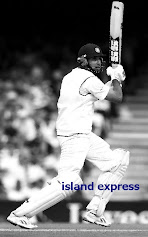But Sanjay - he is really maturing as a commentator. I think the best thing is that he has been given the hard task of introducing each random commercial segment of the pre-post match shows. Where he has to say Lava Super Fours. And he is almost apologetic when he has to say - with a twisted smile, and an odd way of putting it forth. He is self effecaing enough about his own record, especially when Ganguly and Dravid are around (though he is much more senior a cricketer). And he is not pompous. Thats what I hate about Ganguly. Sanjay and Dravid together are a delight - both probably the most technically correct batsmen ever produced by India, and both are the least likely to fault any other batsmen on technical aspects; always leaving space in their comments to be not absolutely hard on anyone.
What helps Sanjay is I think his years of producing cricket compilation videos. He learnt the art of looking directly into a camera and speaking to a viewer, which is not something the rest have mastered yet - maybe Ravi Shastri and Harsha Bhogle. The rest want to talk to each other. In their living room.
-
Siva - I am thankful that Siva is not doing as much commentary now as he used to. What a terrible speaker. If his accent wasn't bad enough, his descriptions, his manner - everything. Am sure we have more English speaking ex-cricketeers than him. W.V. Raman and others who do Ranji games are so much better. Worst. Piss offs.
--
[To be completed]


